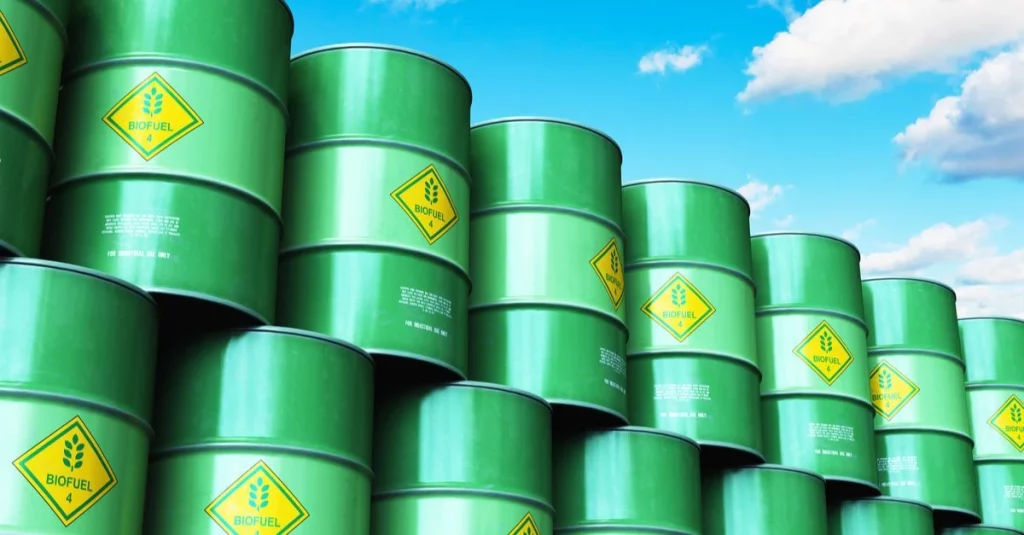Introduction
Coal and oil have played an important role in humanity’s progress, but continued use of fossil fuels could also cause humanity’s demise thanks to many associated problems – pollution, global climate change, and resource wars to call a couple of. The most issue lately isn’t such a lot about fossil fuels running out, but the damage they’re wreaking on our planet. Electric vehicles will help address a part of the dilemma, but there’ll still be some need for solid and liquid fuels well into the longer term for transport and other applications. In this context, industrial hemp fuel emerges as a promising contender, offering a renewable and environmentally sustainable alternative to traditional fossil fuels.
Biofuels are derived from the crops like soybean, and industrial hemp (Cannabis Sativa) in comparison to many other alternative fuels. Industrial hemp Fuels may be a good feedstock for producing several different types of liquid fuels, gas, and also solid fuels.
Hemp Biodiesel
Hemp seed contains around 30% oil – and this oil has been utilized for hundreds of years as a fuel for lamps. Hempseed oil also can be transformed into biodiesel suitable to be used in vehicles through a process called transesterification.
It’s been calculated that hemp can produce quite 800 liters of biodiesel per hectare per annum—a greater yield than crops like soybean, sunflower, peanut, or rapeseed. Added thereto is the potential to also produce methanol, ethanol, biogas, and solid fuels from the remainder of the plant.
Hemp Ethanol and Methanol
Unlike in biodiesel applications, the entire hemp plant is often utilized in ethanol or methanol production. like biodiesel, ethanol and methanol are often used as fuels for vehicles. When derived from industrial hemp Fuels, these alcohols are sometimes mentioned as hempanol.
Ethanol is formed from the sugars and starches of plants. To make ethanol from hemp, it requires a process called cellulolysis that consists of a variety of stages.
- Pre-treatment to form the cellulose content in hemp suitable for hydrolysis.
- Breaking down of the molecules into sugars by using an enzyme that converts cellulose into glucose known as cellulase.
- Separation of sugar materials from the lignin.
- Fermentation of the sugar solution.
- Distillation to extract the ethanol.
- The use of molecular sieves to extend ethanol concentration.
- Utilizing hemp ethanol as a fuel in vehicles definitely is not a new idea. Ford reportedly originally cultivated hemp for the assembly of ethanol to use in his cars.
The other alcohol, methanol, is produced from the woody/pulp matter of plants; it’s also referred to as methanol. Creating methanol from hemp is often achieved through dry distillation. This might include pyrolysis, the thermochemical decomposition of organic material in the absence of oxygen so that the fabric doesn’t erupt. The heating of the fabric produces gases, which will be condensed into methanol. The by-product of dry distillation, charcoal, is often used as a solid fuel.
Hemp as a Solid Fuel
A 2011 study found the adjusted biomass energy yield of hemp was 120% above that of wheat straw in terms of solid fuels.
One of the strongest and toughest biofuels that will be produced is known as hemp pellets, which are made up of the shiv or hurd—that is, the woody core of the plant. Using hemp for pellets may be a good alternative to wood because it produces around the same heat with similar levels of ash content and isn’t corrosive. Hemp can also can make charcoal and, through the pyrolytic process, create it and also produce liquid biofuels like methanol.
Advantages of Hemp Biofuel
- As a carbon-neutral resource, the plant ingests CO2 (CO2) very quickly, even faster than trees. Plus, CO2 emissions from biodiesel are reabsorbed through the method of photosynthesis in plants. So, additionally, to pull toxins from the soil, the hemp plant can essentially “scrub” CO2 from the air we breathe.
- When growing hemp, it returns about 70% of its required nutrients to the soil, which suggests this crop requires much less fertilizer to grow. Fewer fertilizers mean cleaner water supplies.
- Creating a natural resource crop that may restore the soil to health and pull toxins from the bottom, air, and water while creating a viable energy source.
Auto Industry uses Hemp Biofuel
While hemp biofuel might not be a well-liked alternative just yet, the automotive industry already uses hemp. Automakers weave hemp plastic into a bendable material almost like fiberglass. Most European car makers use hemp fibers as door panels and trim pieces. and corporations like FlexForm Technologies operate as a fanatical producers of hemp-fiberglass that they sell to automotive companies to be made into car doors and exterior panels.
Cars that feature hemp-based materials include the BMW i8 supercar and therefore the Lotus Evora. the benefits that accompany hemp-made materials are that they’re lighter, bio-degradable, and come from a way easier natural resource. Hemp grows in roughly 3 months, while metals take thousands of years to make.
Bottom Line
Ultimately, for the production of biofuel, hemp seeds are the most viable option. Hemp features a high fuel yield and a brief growth cycle. Also, hemp can grow on infertile soil and is very immune to pests and diseases. Biodiesel made up of plants can easily meet clean air regulations. it’s also a way better economic and environmental option than other biofuel crops.
For an era, Hemp has been legal in several countries worldwide. However, perhaps the top commercial hemp prohibition in America is going to be the catalyst for a replacement hemp biofuel revolution.


Pingback: Industrial Hemp Cultivation in India | NAP Limited
Pingback: NAP Limited - The History of Hemp: From Ancient Times to the Present 2024